Developed from JEOL's over 60 years of MS expertise, the new JMS-Q1600GC UltraQuad™ SQ-Zeta Single Quadrupole Mass Spectrometer is their sixth generation of high-end Gas Chromatograph Quadrupole Mass Spectrometers (GC-QMS).
Designed for quantitative tasks such as environmental testing, water quality monitoring and agrochemical analysis, as well as qualitative applications including materials and aroma analysis, the SQ-Zeta delivers high-performance, general-purpose GC-MS functionality.
High Sensitivity and Excellent Dynamic Range
IDL < 5 fg
Eight consecutive readings of 20 fg of octafluoronaphthalene (OFN) were measured using the standard electron EI ion source.
The instrument detection limit (IDL) was determined from the peak area and the reproducibility of the molecular ion's extracted ion chromatogram, achieving an IDL of 2.6 fg.
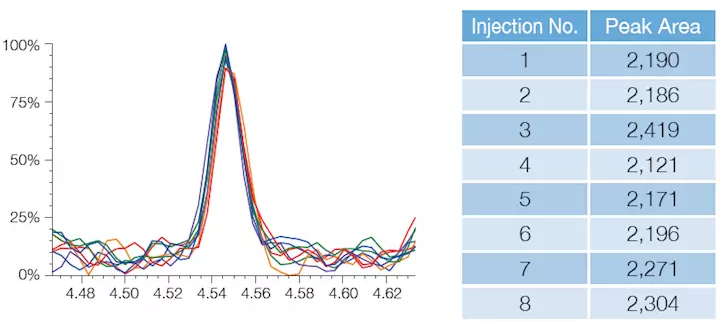
Image Credit: JEOL USA, Inc.
Wide Dynamic Range
OFN was measured at varying concentrations ranging from 0.005 to 1000 pg/µL using the standard EI ion source on SIM mode.
The resulting calibration curve had excellent linearity, with a determination coefficient of 0.999 or above. Its wide dynamic range, spanning over five orders of magnitude, supports both quantitative and qualitative analysis of complex mixtures with varying concentrations.
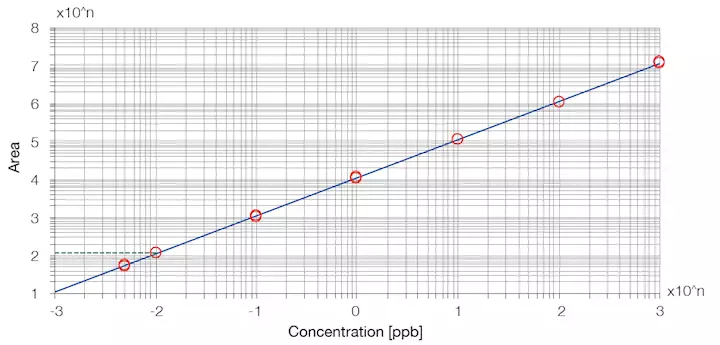
Image Credit: JEOL USA, Inc.
Two Unique EI Ion Sources for Expanded Analytical Solutions
Enhanced Performance Ion Source (EPIS, Option): IDL <1 fg
The EPIS delivers industry-leading sensitivity, achieving an instrument detection limit of less than 1.0 fg (based on eight measurements of five fentograms of OFN).
This exceptional sensitivity provides several key advantages:
- Trace-level quantitative analysis.
- Simplified sample concentration analysis with reduced sample introduction volume, minimizing contamination.
- Transition from SIM to SCAN for quantitative measurements, simplifying conditions and enabling non-target analysis.
With these capabilities, the EPIS is well-suited for both quantitative and qualitative analytical applications.

Image Credit: JEOL USA, Inc.
Eight consecutive measurements of 5 fg OFN were taken using the EPIS ion source.
The IDL, calculated from the peak area and the reproducibility of the extracted ion chromatogram for the molecular ion, was calculated as 0.6 fg.
Photoionization EI/PI Combination Ion Source (Option)
Photoionization (PI) is a soft ionization method that uses vacuum ultraviolet (VUV) photons to ionize analytes with minimal fragmentation. The combined EI/PI ion source enables both electron ionization and photoionization without hardware changes. Users can switch modes simply by activating or deactivating the EI filament and PI lamp, offering added convenience.
Features
- No ion source replacement is required
- No reagent gases are needed
- Optimized for qualitative analysis
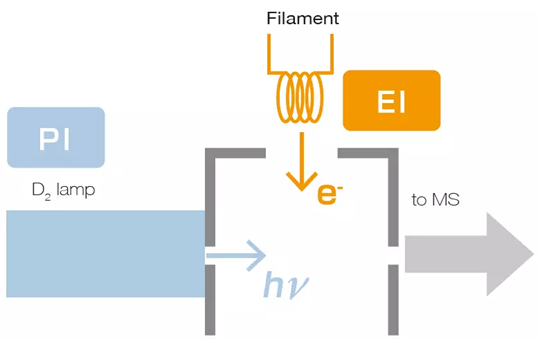
Schematic of EI/PI Combination Ion Source. For PI: Lamp: ON, Filament: OFF; For EI: Lamp: OFF, Filament: ON. Image Credit: JEOL USA, Inc.
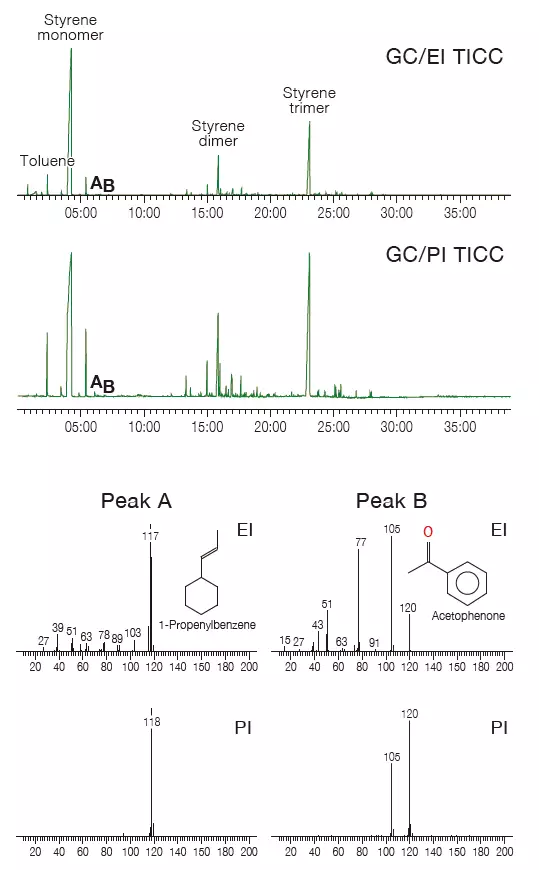
Py/GC-MS measurement result of polystyrene foam. Image Credit: JEOL USA, Inc.
Aromatic hydrocarbons are readily ionized by PI due to their strong UV absorption, allowing highly sensitive detection of their molecular ions.
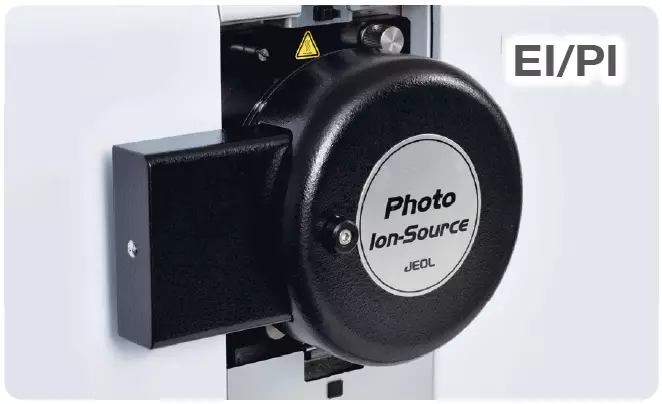
Image Credit: JEOL USA, Inc.
Integrated Qualitative Analysis Software "msFineAnalysis iQ"
The msFineAnalysis iQ software goes beyond conventional library-based qualitative analysis by integrating data from both EI and soft ionization, enabling more advanced compound identification.
Based on the widely used msFineAnalysis software for GC-TOFMS, this new version brings the same integrated analysis functionality to GC-QMS systems.
The software automatically combines library search results from EI data with molecular ion information obtained via soft ionization. The results are then presented in an easily interpreted, color-coded table for analysis and compound identification. Combining EI and soft ionization enhances the accuracy of unknown identification compared to relying solely on library database searches.
msFineAnalysis iQ automatically executes the following steps to enhance qualitative analysis:
- Peak detection (deconvolution peak or TIC peak detection)
- Link to EI and SI data (link)
- Link to EI and SI data (link)
- Molecular ion search (SI)
- Library search result (EI, SI integration)Five
- Final results are presented as an integrated analysis result
By integrating EI and SI data within a single workflow, msFineAnalysis iQ delivers a higher level of qualitative analysis accuracy compared to conventional database-driven methods.
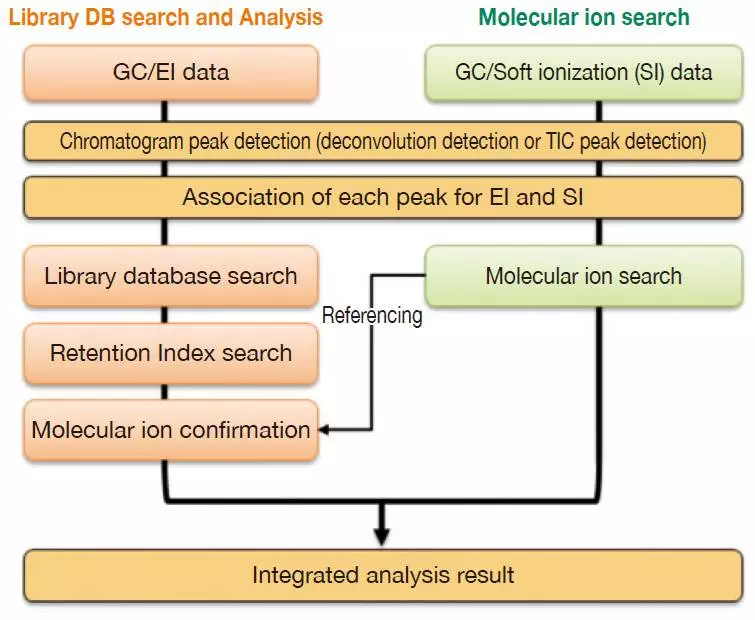
Work Flow of Integrated Analysis. Image Credit: JEOL USA, Inc.
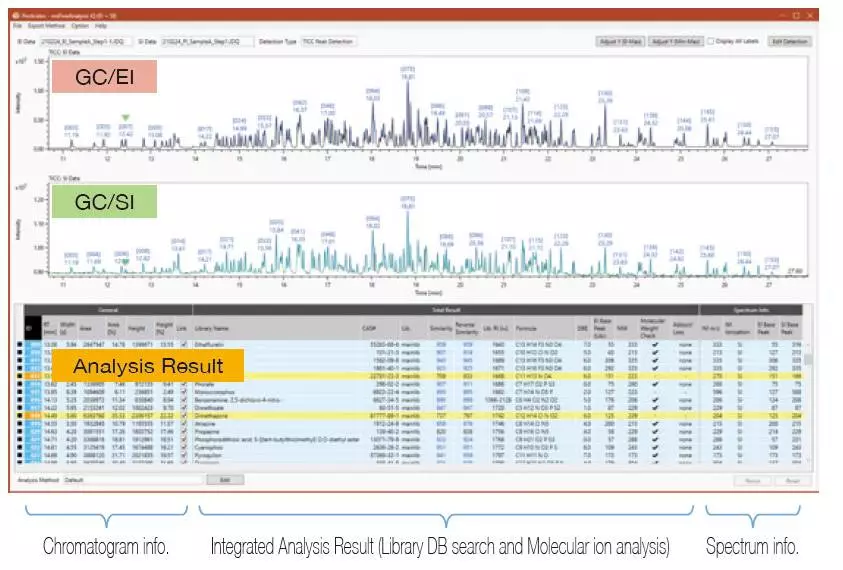
Integrated Analysis Result Window. Image Credit: JEOL USA, Inc.
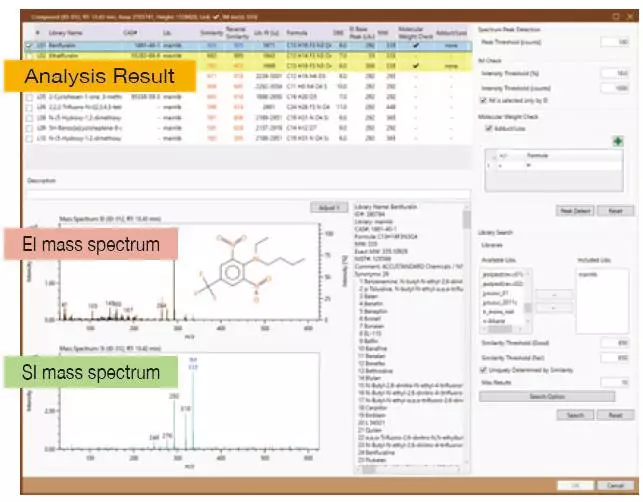
Individual Analysis Window. Image Credit: JEOL USA, Inc.
Key Features
- Excellent ion transmission in the high-mass region minimizes ion loss even under high ion current conditions.
- Long-term high performance is ensured by combining a pre-filter, hyperbolic quadrupoles, and a conversion dynode secondary-electron multiplier (SEM).
- A draw-out lens significantly reduces chemical noise that interferes with high-sensitivity analysis.
- Supports EI (standard), CI, and PI (optional) sources.
- Tool-free removal of the ion source allows for easy cleaning and maintenance.
- Compatible with direct insertion probe (DIP) and direct exposure probe (DEP).